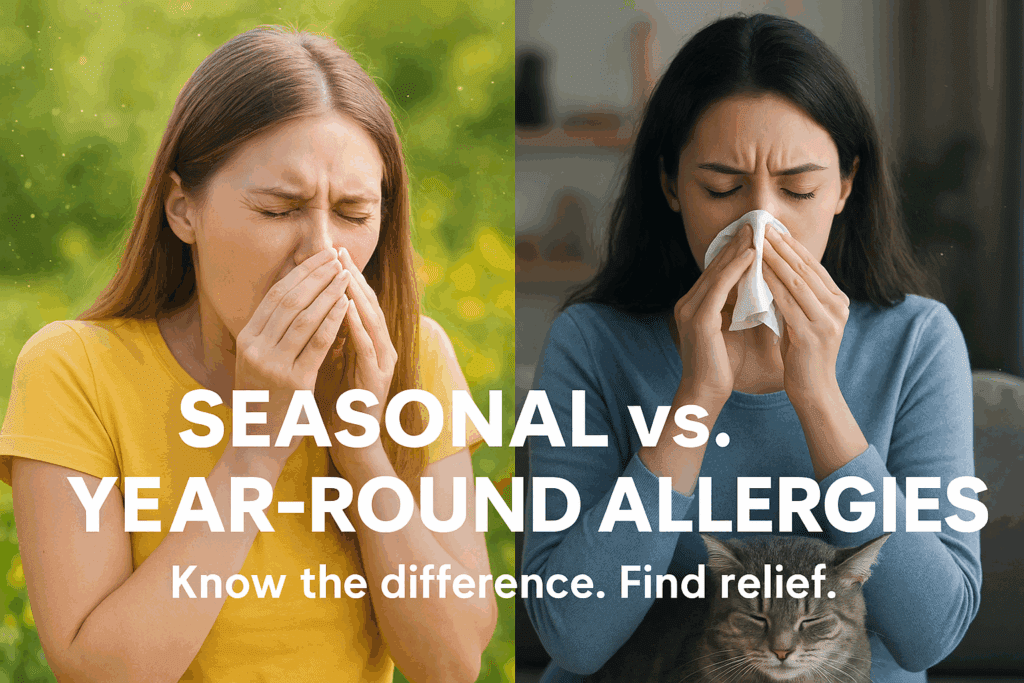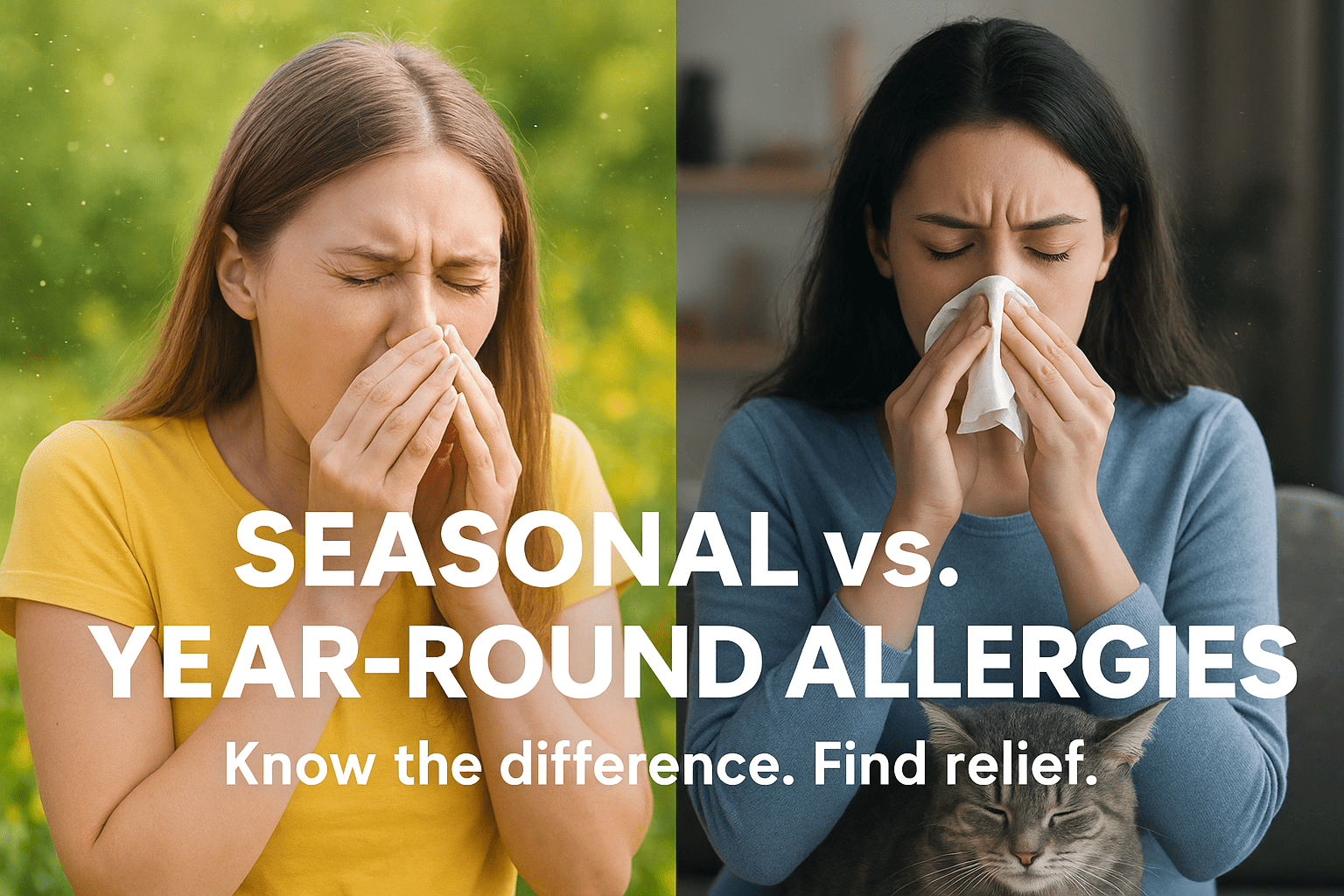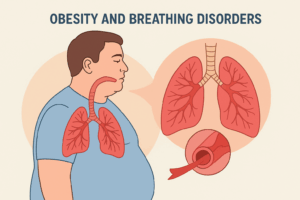
Allergies affect millions of people worldwide—but not all allergies are the same. Some people notice sneezing, watery eyes, and congestion only during certain times of the year. Others deal with symptoms every single day. Knowing whether you have seasonal allergies or year-round (perennial) allergies can help you get the right treatment and long-term relief.
🌿 What Are Seasonal Allergies?
Seasonal allergies—also called hay fever or allergic rhinitis—are triggered by allergens that appear at specific times of the year, such as:
-
Spring: Tree pollen
-
Summer: Grass pollen
-
Fall: Ragweed and mold spores
Common Symptoms
-
Sneezing fits during certain months
-
Itchy, watery eyes
-
Runny or congested nose
-
Scratchy throat
These symptoms often come and go with the seasons, especially when pollen counts are high.
🏠 What Are Year-Round Allergies?
Year-round allergies, also known as perennial allergies, are caused by indoor allergens you’re exposed to daily, such as:
-
Dust mites
-
Pet dander
-
Mold
-
Cockroaches
Common Symptoms
-
Daily nasal congestion
-
Constant sneezing
-
Itchy eyes and throat (no matter the season)
-
Worsening symptoms when cleaning, vacuuming, or being around pets
Unlike seasonal allergies, perennial allergies don’t disappear when the weather changes.
🔎 Key Differences Between Seasonal and Year-Round Allergies
| Feature | Seasonal Allergies | Year-Round Allergies |
|---|---|---|
| Triggers | Pollen, mold (outdoors) | Dust, pets, mold, cockroaches (indoors) |
| Timing | Certain months (spring/fall) | Every day of the year |
| Duration | Weeks to months | Constant, often lifelong |
| Relief Options | Antihistamines, nasal sprays, avoiding pollen exposure | Allergen-proof bedding, air purifiers, daily meds, allergy shots |
🌟 Seasonal Allergy Relief Tips
-
Check daily pollen counts before going outside
-
Shower and change clothes after spending time outdoors
-
Use HEPA air filters indoors
-
Keep windows closed during high pollen days
🌟 Year-Round Allergy Relief Tips
-
Wash bedding weekly in hot water
-
Use dust-mite-proof covers for pillows and mattresses
-
Vacuum with a HEPA filter
-
Limit pet access to bedrooms
-
Consider seeing the best pulmonologist near me or an allergist for testing and treatment
❓ Patient FAQs
Q: How do I know if I have sleep apnea or just allergies?
If you snore, wake up tired, or have pauses in breathing at night, it could be sleep apnea. Allergies mainly cause nasal congestion and sneezing. A sleep study can confirm.
Q: Can seasonal allergies turn into year-round allergies?
Not exactly—but people can develop both. You might have pollen allergies in spring and also be sensitive to dust mites indoors.
Q: What’s the best medicine for year-round allergies?
Long-acting antihistamines, nasal corticosteroid sprays, and sometimes allergy shots (immunotherapy) are recommended. Always consult your doctor.
Q: Do allergies go away on their own?
Some childhood allergies may improve with age, but most adult allergies tend to persist without treatment.
🩺 When to See a Doctor
If your allergy symptoms are constant, worsen at night, or you’re not sure whether it’s allergies, asthma, or even sleep apnea, it’s time to see a specialist. Getting the right diagnosis makes all the difference in finding real relief.
🌟 At BreatheSleepMD, we’re proud to be the highest-rated pulmonary and sleep doctor in Houston, Texas, on Google reviews. Patients choose us because we combine advanced allergy testing with proven treatments that work.
📞 Call us today at 832-263-1177 or book your appointment online. Don’t wait until your allergies get worse—take the first step toward easier breathing and better sleep.
👉 Bottom line: Seasonal allergies flare up with pollen and weather changes, while year-round allergies stick around daily due to indoor triggers. Knowing the difference helps you manage symptoms better and get lasting relief.




